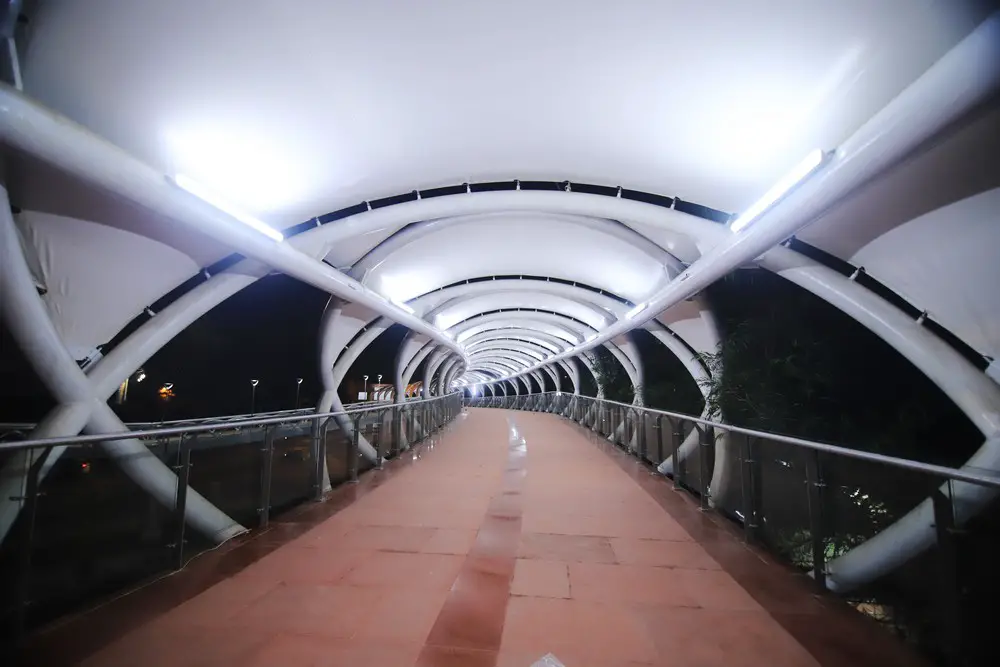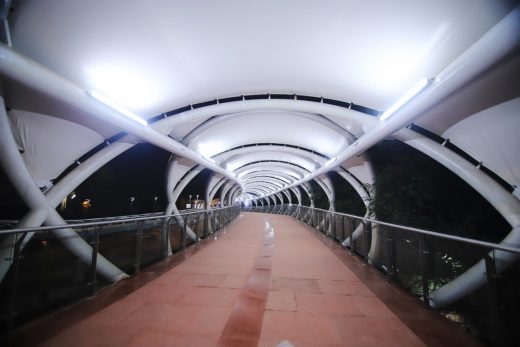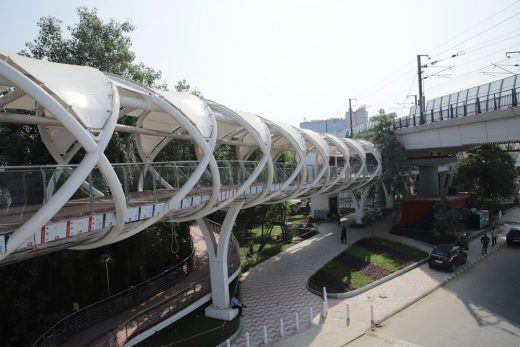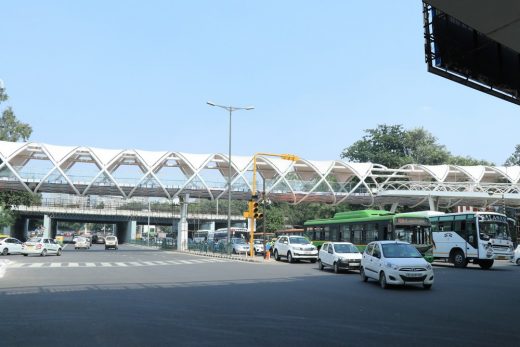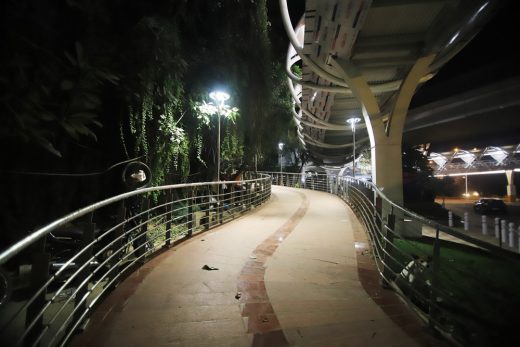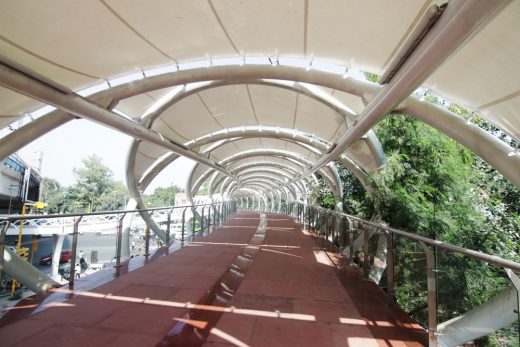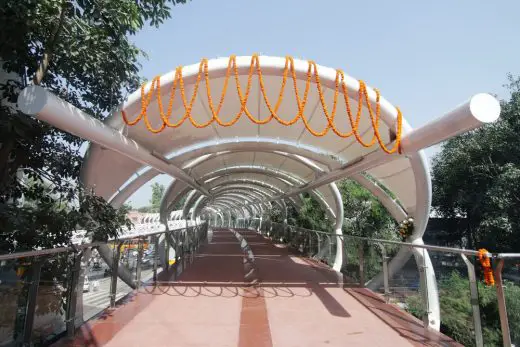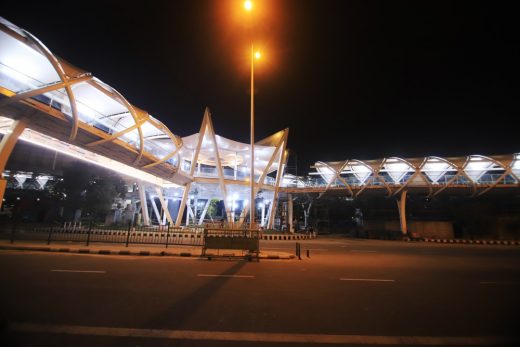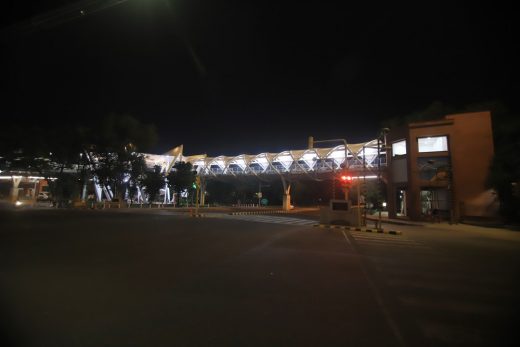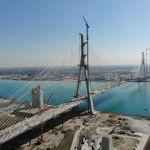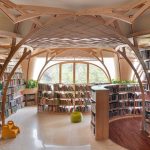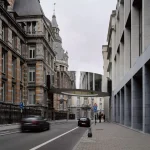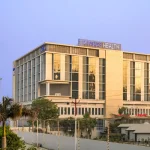ITO – Skywalk, New Delhi Architectural Development, Indian Structure, Pedestrian Footbridge Photos
ITO – Skywalk in New Delhi
Contemporary Pedestrian Footbridge Development in India – design by DFI
12 Jun 2019
ITO – Skywalk
Architects: DFI
Location: New Delhi, India
The newly minted ITO Skywalk, a foot over-bridge in New Delhi, connecting four principal streets offers a ground-breaking solution to decongest and facilitate safe and seamless pedestrian flow amidst the heart of the city. Roughly 535m long, it spans across Sikandra Road, Mathura Road, Tilak Marg, and Bahadur Shah Zafar Marg, while catering to the ITO as well as Pragati Maidan Metro stations.
Being Delhi’s longest skywalk, this integrates numerous nodes in one of the busiest stretches of the metropolis, that sees office goers commute to various corporate and government buildings in the vicinity such as the ITO, Police Headquarters, PWD Headquarters, GST Office, Supreme Court, DDA Vikas Minar, Lady Irwin College amongst others.
The project defies the solidity of the surroundings and is conceived as a serpentine tube, coiling around major intersections. The program called for a unified response to the area’s burgeoning commuter concerns, especially at the ITO Crossing and the ‘W’ Point Junction, which sees maximum pedestrian traffic throughout the day. A network of public transport systems including the two metro stations, Tilak Bridge railway station, and various DTC bus stops are major hubs that mobilize traffic flow in the area, especially during rush hour. The design paradigm traced this flow and came up with a safety mechanism in the form of a skywalk at ‘W’ point and a foot over-bridge at Hans Bhawan. The skywalk was designed to not just fulfil its utilitarian purpose of serving as a medium of mobility, but also to establish itself as a landmark within the city.
ITO Skywalk’s reticulated profile boasts of state-of-the-art facilities; its instantly recognizable silhouette feature structural, crisscross boot lace trusses that are covered with tensile fabrics. The structure incorporates steel members, with all junctions (except Supreme Court and Railway Colony Junction) being constructed in RCC and clad in red Agra stone in adherence to the context. The Supreme Court and Railway Colony junctions are conceived in the form of octagonal units with steel crowns, featuring granite flooring and S.S. glass railings. The tensile fabric roofing is an ingenious intervention, fulfilling both functional and aesthetic requirements. Concepts unique to the design are glass lifts at every junction displaying sensitivity to the needs of women and differently abled; as well as public Wi-Fi and surveillance systems for additional safety.
Landscape and lighting have been thoughtfully integrated with the design, as patches of green coalesce with a combination of functional and facade lighting, rendering the over-bridge to be aesthetically appealing, yet economical.
Emphasis has been laid on the tensile fabric roofing and steel structure, highlighting their form through strategic installation of lighting fixtures, while making them vandal-proof. The under deck has also been lit-up with LEDs that provide a sense of height for the stream of vehicles passing below. Challenges included circumventing the various existing underground services during the foundation work and bending the structural tubular members into the proposed form to enable assembly. Additionally, maintenance of smooth traffic flow during the deck launching and extreme weather conditions also hampered the execution of work.
The ITO Skywalk has been an endeavor to impinge positively upon the existing character of the neighborhood that it serves, aiding hundreds of thousands of citizens daily. By creating a physical configuration towards the mobility infrastructural network to providing commuters with a connectivity of a sustainable alternative network, a better reach is enabled amongst the cross junctions in the busy ITO neighborhood of the dense metropolis city of New Delhi. Solutions such as the Skywalk are seen as not just modes of commutes, or to generate ephemeral experiences through spaces, but more so as contributions to the architecture, public infrastructure and the urban context in which they thrive.
Architects: DFI
Photography: Andre J. Fanthome
ITO – Skywalk in New Delhi images / information received 120619
Location: New Delhi, India
Architecture in India
Indian Architecture Designs – chronological list
Architecture Tours New Delhi by e-architect
Three Trees House in New Delhi
Design: DADA & Partners, architects
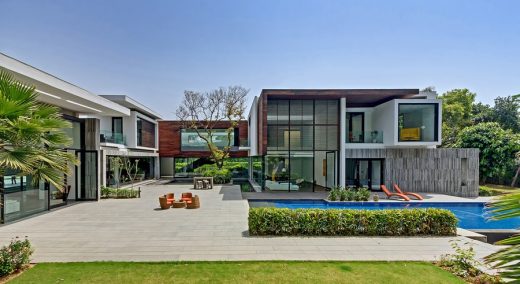
photograph : Ranjan Sharma / Lightzone India
Three Trees House in New Delhi
Mood House, Faridabad, New Delhi
Design: Studio Archohm, architects
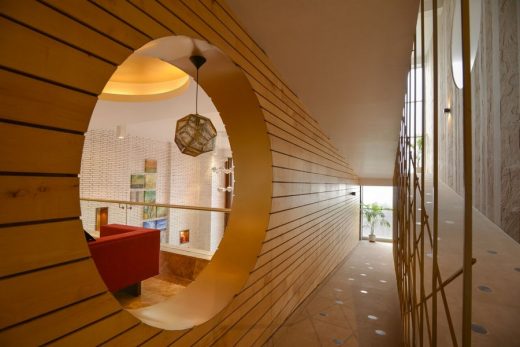
photograph : Bharat Aggarwal
Contemporary New Delhi House
Indian Architecture Offices : contact details
Cubix Office Interior in New Delhi
Design: SPACES ARCHITECTS@ka
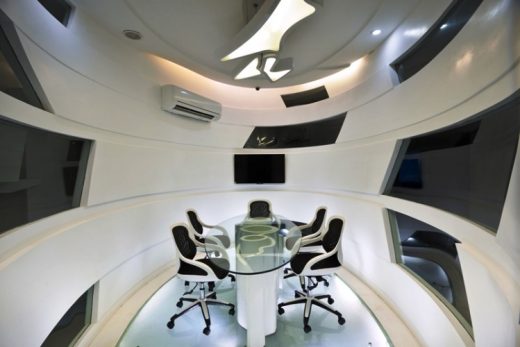
picture from architects
Cubix Office interior in New Delhi
Comments / photos for the ITO – Skywalk in New Delhi – Contemporary Building in India page welcome

